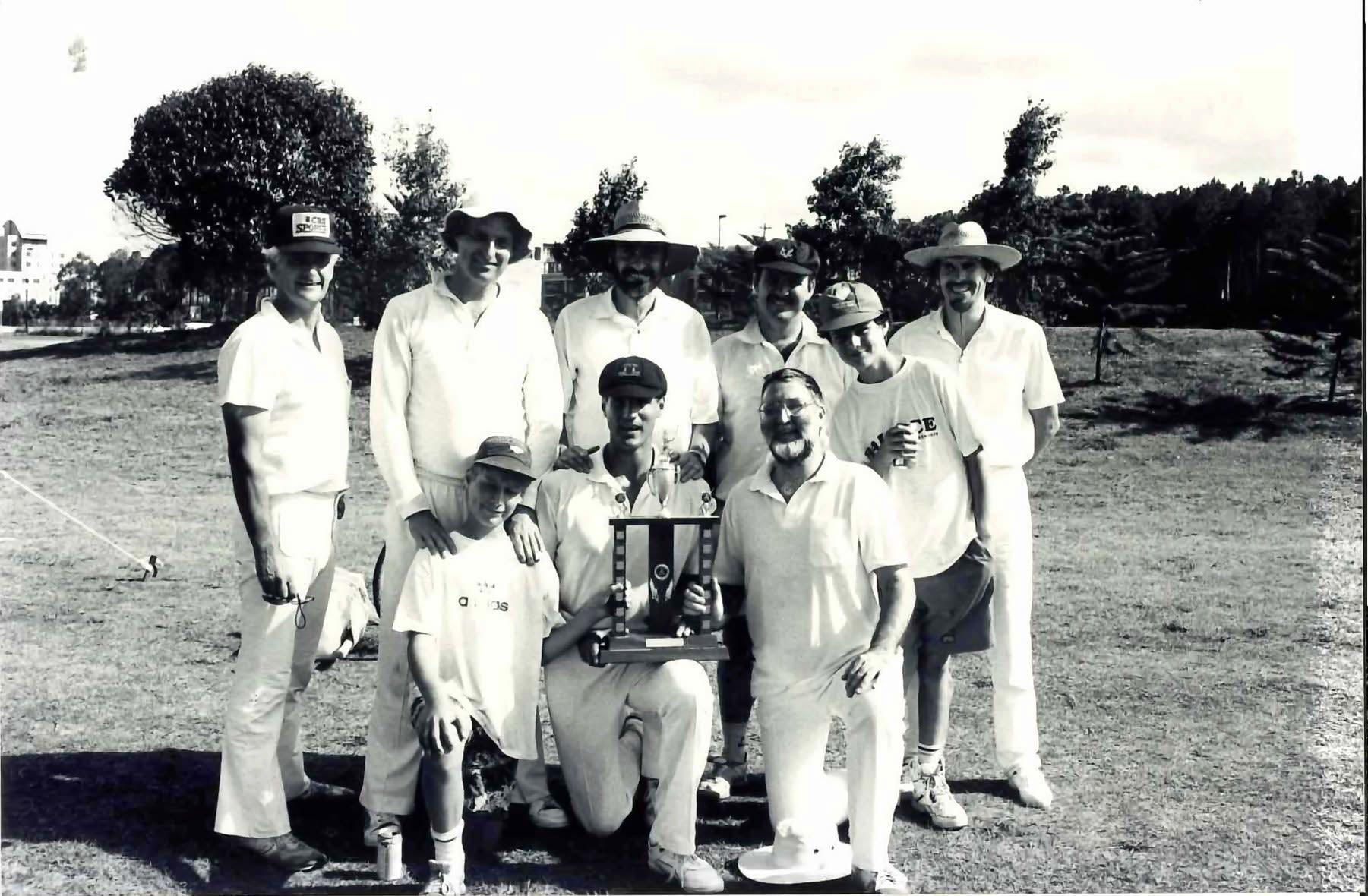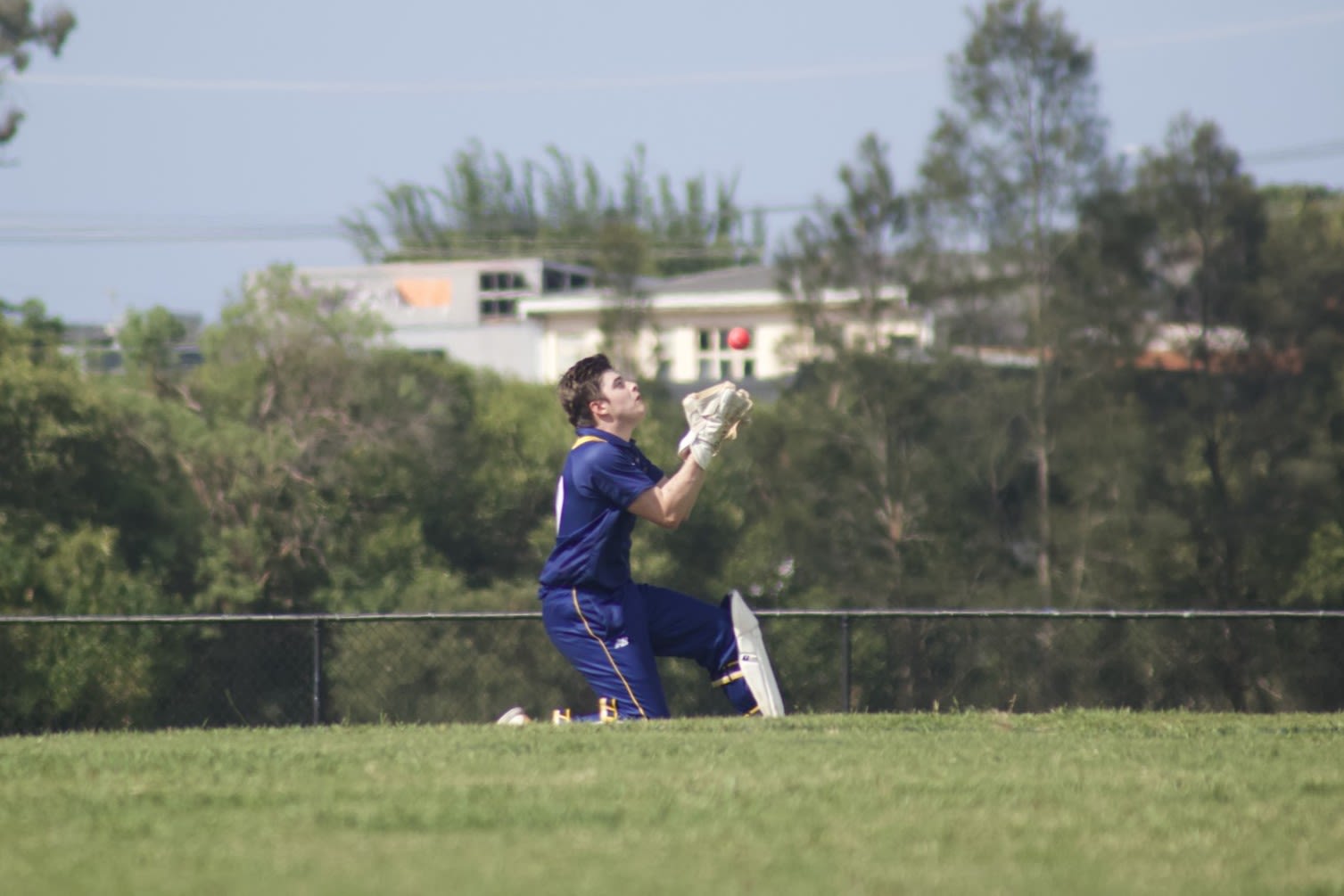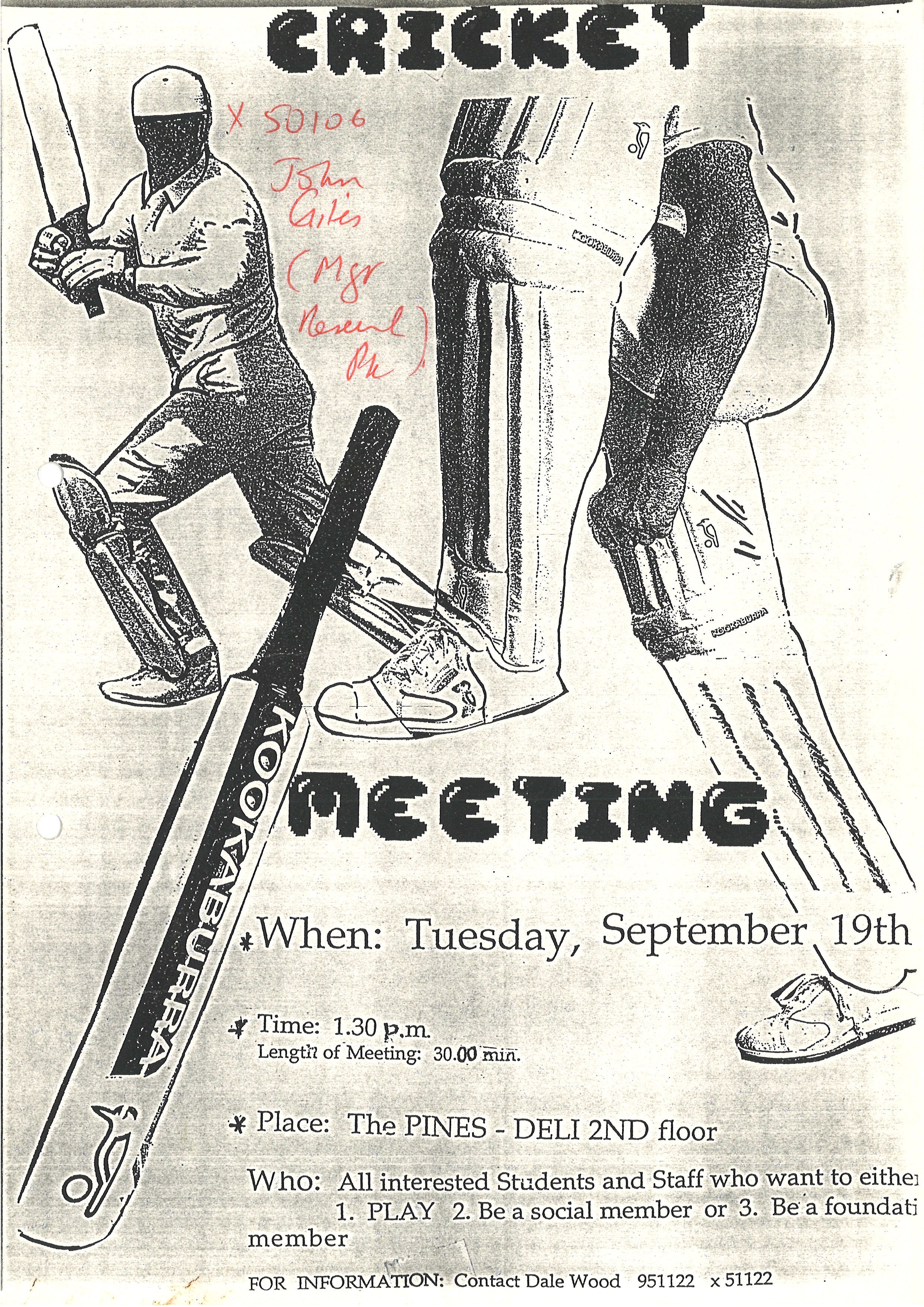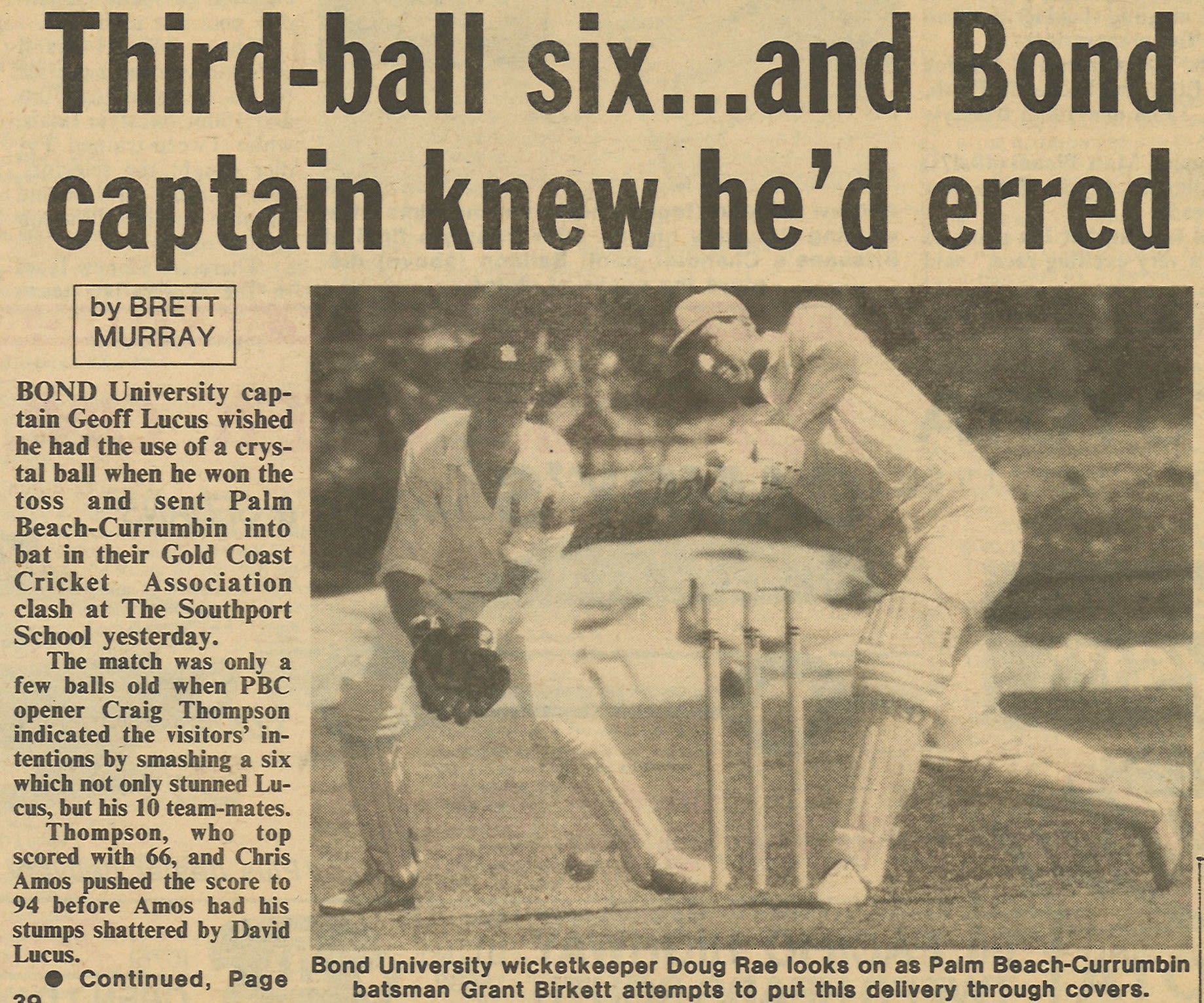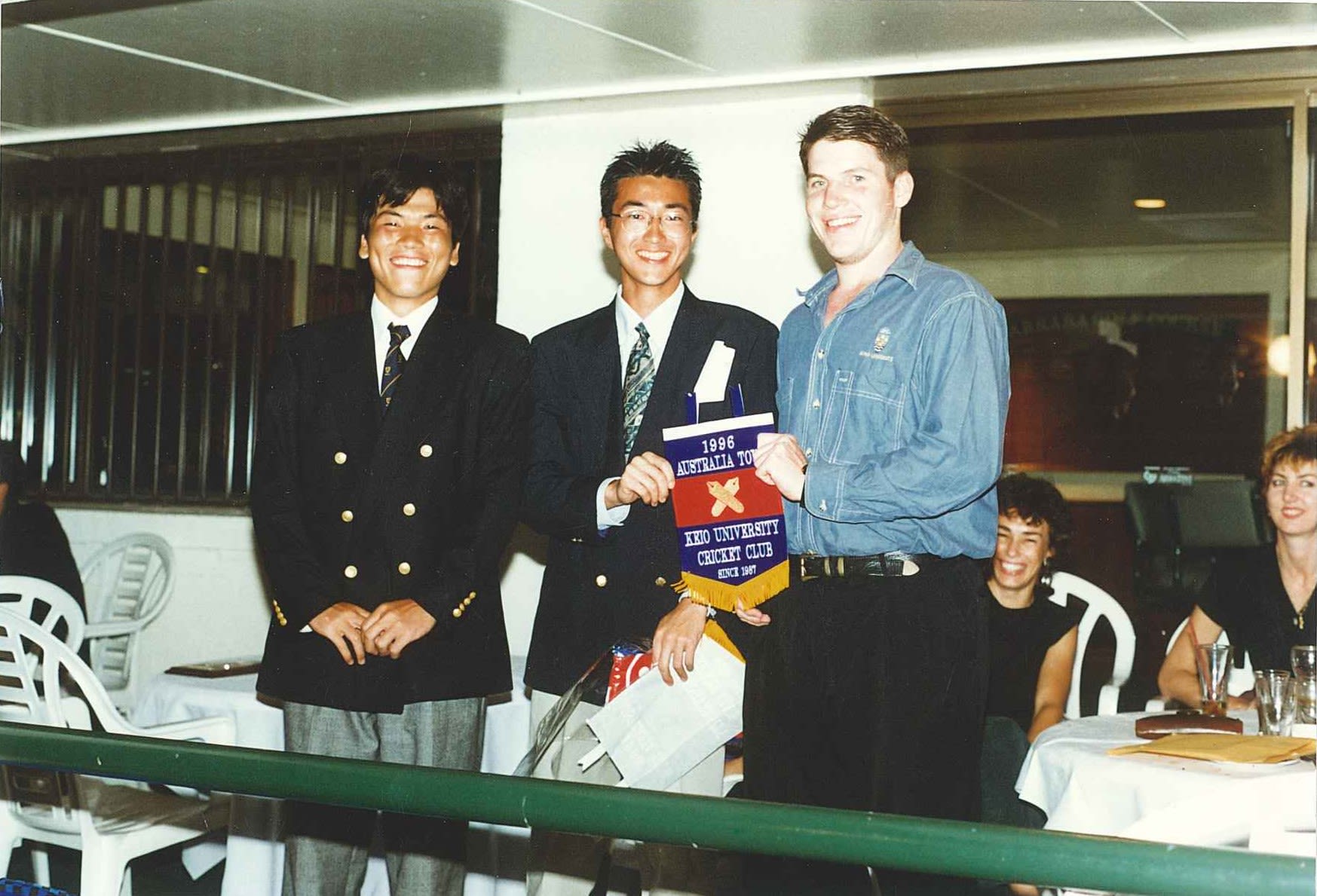Second innings
AFTER THREE DECADES, BOND IS BACK AT THE CREASE
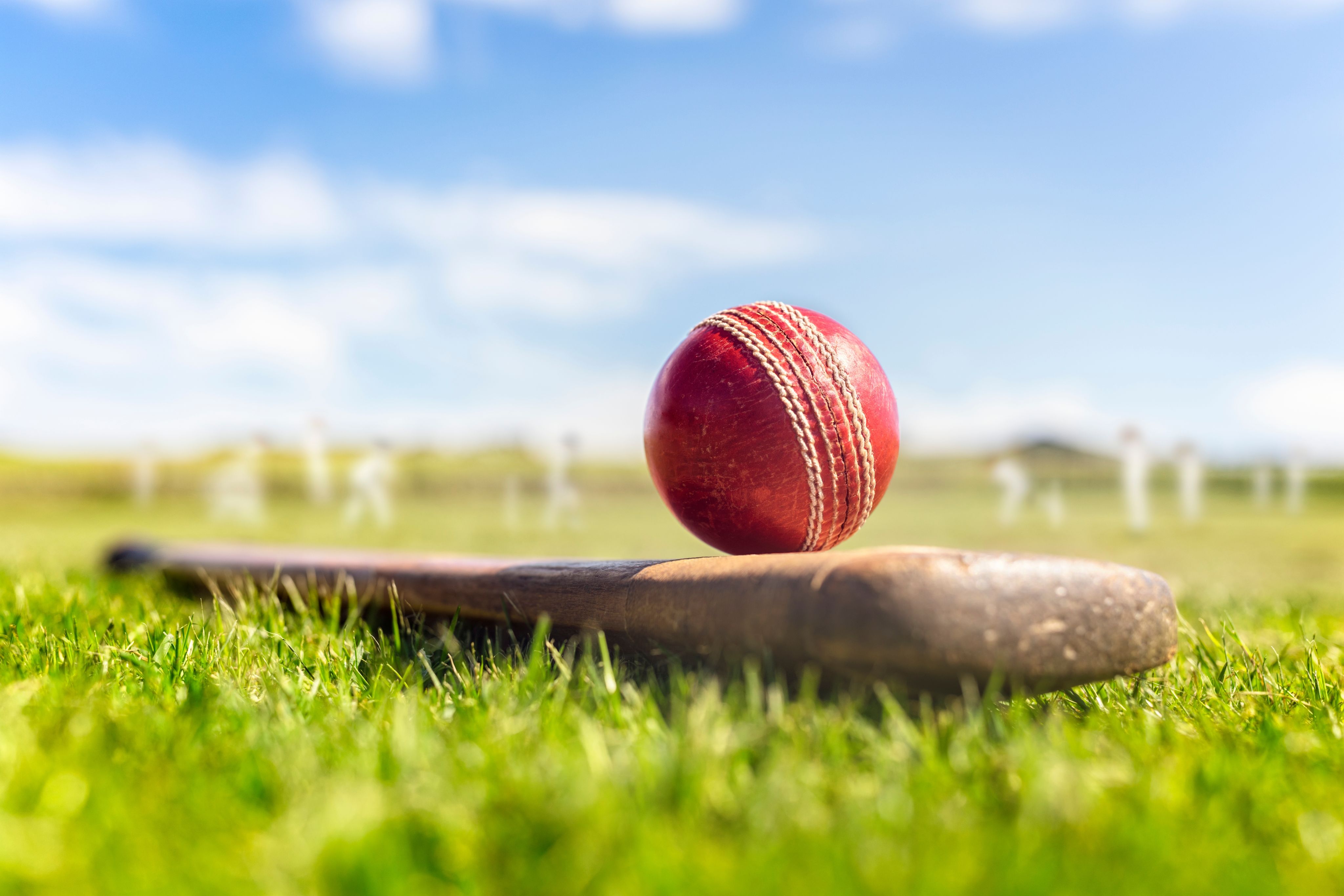
In 1989, an academic rallied students to form Bond University's first cricket club. It pulled up stumps in the nineties, but now another lecturer has sent the club back into bat.
It is the cornerstone of a Bond education – the personal attention, mentorship and learning opportunities extending beyond the classroom that Australia’s best student-to-teacher ratio provides. Eleven students for every staff member make perfect sense in a lecture theatre. But on any given summer Saturday, you can also see it in action on the cricket fields of the Gold Coast.
Each week, the 11 players and 12th man selected to represent the Bond University Cricket Club are drawn from students and one lecturer – 40-year-old allrounder Harish Aakula. In a lovely echo of Bond’s earliest sporting days, Aakula’s team marks the revival of a cricket club first formed in 1989 by foundation students and staff, including a PhD scholar named Stephen Sugden.
More than three decades on, Aakula has picked up the mantle, showing that the bond between teacher and student still extends well beyond the classroom.
The Bond team and early silverware. Source: Bond University Library archives.
The Bond team and early silverware. Source: Bond University Library archives.
Batting on
In cricketing terms, Aakula has enjoyed a long dig at Bond, having completed his MBA in 2012 and a Master of Actuarial Science (Data Analytics) in 2022. He now serves as the University’s Manager of Data Science and Insights in the Office of Strategy and Planning and lectures in Actuarial Science.
His kit bag, however, had been gathering dust in the shed for more than a decade before the re-establishment of a Bond cricket club in 2024 – after a hiatus of almost 30 years – gave him a chance to combine his two great passions.
“I’ve been associated with Bond for about 14 years now as a student and a staff member,” Aakula says. "The only thing missing for me at Bond was cricket. So when a few medical students came up with the idea of forming a club, I jumped straight in. Cricket and Bond – they’re both things I love, and putting them together was perfect for me.”
Aakula was a young man when he last rolled the arm over or wielded the willow in any setting more serious than a backyard barbecue. It didn’t take long for the rust to shake off – even if the aches and pains lingered for a few weeks.
In his first outing, Aakula notched a half-century, and soon after produced what remains the most memorable day in the club’s short but spirited second innings: a century and four wickets in the same match to lead Bond to a 37-run victory over Coomera last season.
“It was amazing. A hundred runs and four wickets on the same day. That one will stick with me for a long time.”
For Aakula, cricket has become an extension of the classroom. Many of his teammates are the students he teaches during the week. As lecturers go, he makes a pretty good recruiter.
“I try to put it out there in my classes,” he says. “In week one I always tell the class that cricket is my hobby, and if I see some interest from students, then I refer them back to Bond Cricket Club.”
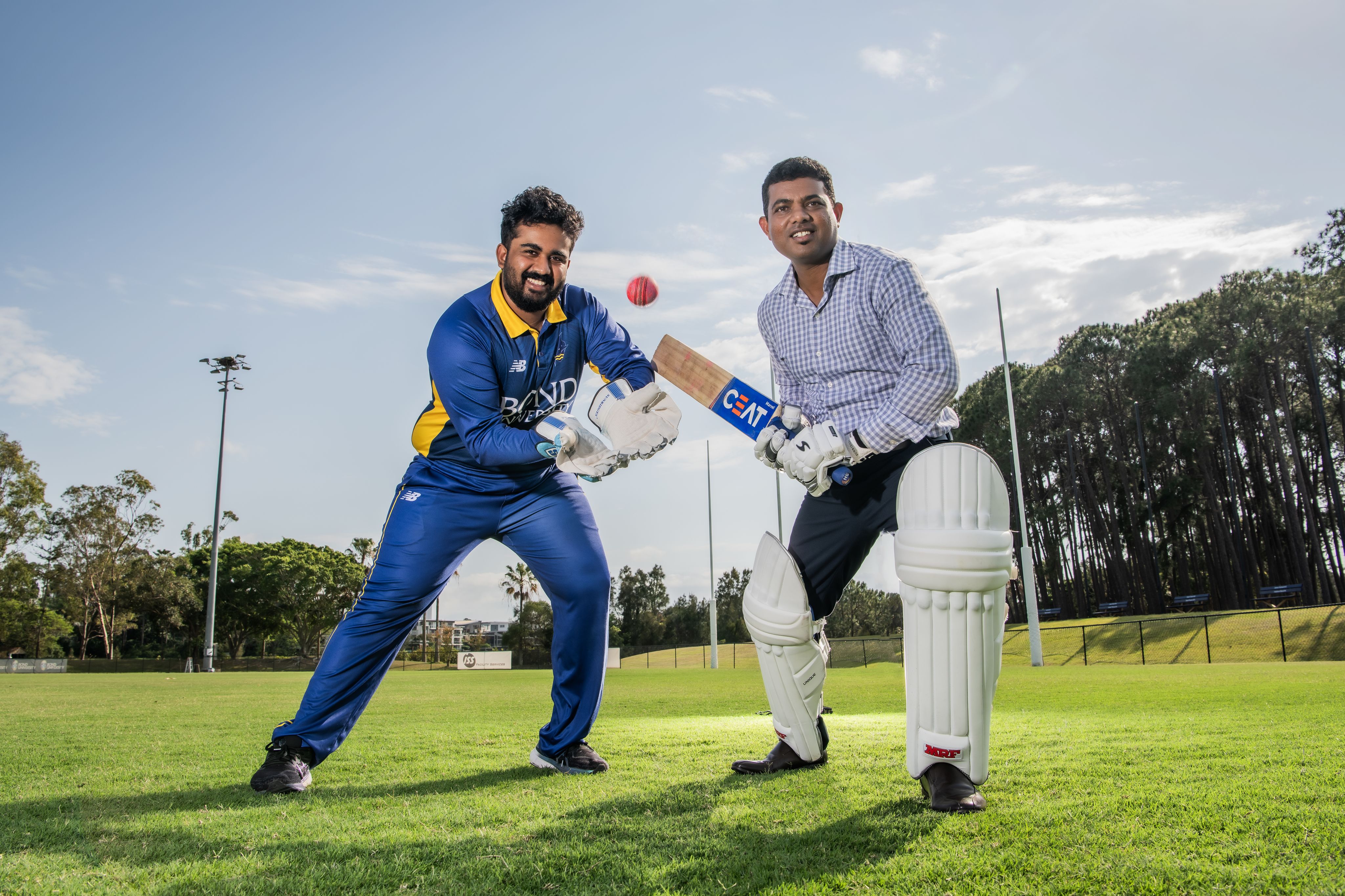
One of those students turned teammates is Kaarthic Mahasivam, the club’s wicketkeeper-batsman and vice-president, pictured here with Aakula, right.
Mahasivam's story with Aakula began in the most Bond way imaginable – in an interview room.
Mahasivam was in his final year of a Biomedical Science degree when he first padded up for Bond at the 2024 UniSport cricket tournament. After graduating, he returned home to Auckland but remained on the club’s group chat while applying for entry to the university’s Medical Program. One of the names on the group chat was Harish, but the penny didn’t drop during a very formal introduction to his future teammate.
“I came up for my interview and it was with Harish, but I didn’t think much of it – he was just another interviewer and a nice smiley face to see,” he says.
Months later, having been accepted into the program, Mahasivam returned to Bond and turned up at a cricket training session.
“I walked up to the nets and lo and behold, there was Harish,” he says. “It was a shock moment – ‘Hey, you’re my interviewer!’ We both laughed about it, and from there we’ve become great teammates.
We weren’t sure if we had to declare a conflict of interest or something,” he jokes, “but we’d never met before, so it was fine!”
For Mahasivam, the club represents everything Bond stands for – connection, community and shared ambitions.
“Hopefully this season I can get a hundred in the club competition, that would be nice,” he says. “My only bragging rights so far are a 50 at UniSport Nationals. We’d like to make the playoffs this year, but really the goal is to keep building. We're trying to build a bit more of a support system and really push on from what we've done in the past. It would be nice to win, but we really just want to establish a strong club where people can have a bit of fun playing cricket together on weekends.”
The Bond Cricket Club made its competitive debut at the 2024 UniSport Nationals, a major milestone for a group that started as a handful of mates keen for a hit together.
“We’ve now got players from all over the university,” Mahasivam says. “Originally it was a bunch of biomed and med students, but through Club Sign-On Day and Instagram we’ve brought in business, actuarial and sport science students, and some post-grad guys too. We even met some blokes at Bonogin Valley where we train who are keen to join. It’s become a really nice way to engage with the community.”
Harry Worthley in action for the Bull Sharks.
Harry Worthley in action for the Bull Sharks.
The return to the crease
At the centre of that growth is club president Harry Worthley, whose persistence and passion have kept the club’s revival alive. Worthley, a medical student, helped re-establish the club by securing a home ground at Palm Beach and entry into the Gold Coast Cricket Division 1 competition for the 2024 season.
This year, the club has partnered with Bonogin Valley and will play their games there. With fresh faces and a clearer idea of the work involved in running a club, Worthley is confident the Bull Sharks can improve on last season’s eighth-place finish.
“Last year was a good foundation season, ironing out the kinks of what it takes to run a cricket team and building up a player base,” Worthley says. “Really, our only goal was to get through the season, and that was probably reflected in our results.
"While initially we looked to be on the verge of a finals place, we dropped away towards the end of the season.”
This year, though, the Bull Sharks are thinking bigger.
“We’ve strengthened the side with some new faces, Shubham Poojary, Subba Reddy Subbu and Ned Scrimshaw – especially in the bowling department, which was a weakness for us last year,” he says. “The competition has expanded to 14 teams, so it’ll be tougher, but we’re confident we can make a finals push.”
Worthley has also led by example on the field, carrying his bat for an unbeaten 93 in the first game of the new season.
In the beg-innings
Long before the modern-day Bull Sharks took to the cricket fields of the Gold Coast, a small band of staff and students in Bond University’s foundation years pulled on the pads and whites for the very first time. It was 1989 and the campus still smelled of fresh paint.
Among the pioneers was Dr Stephen Sugden, who had arrived at Bond the previous August as one of the university’s first scholarship PhD students and a lecturer in the IT faculty. He was roughly the same age then as Harish Aakula is now – a young academic whose love of cricket far exceeded any illusions of athletic glory.
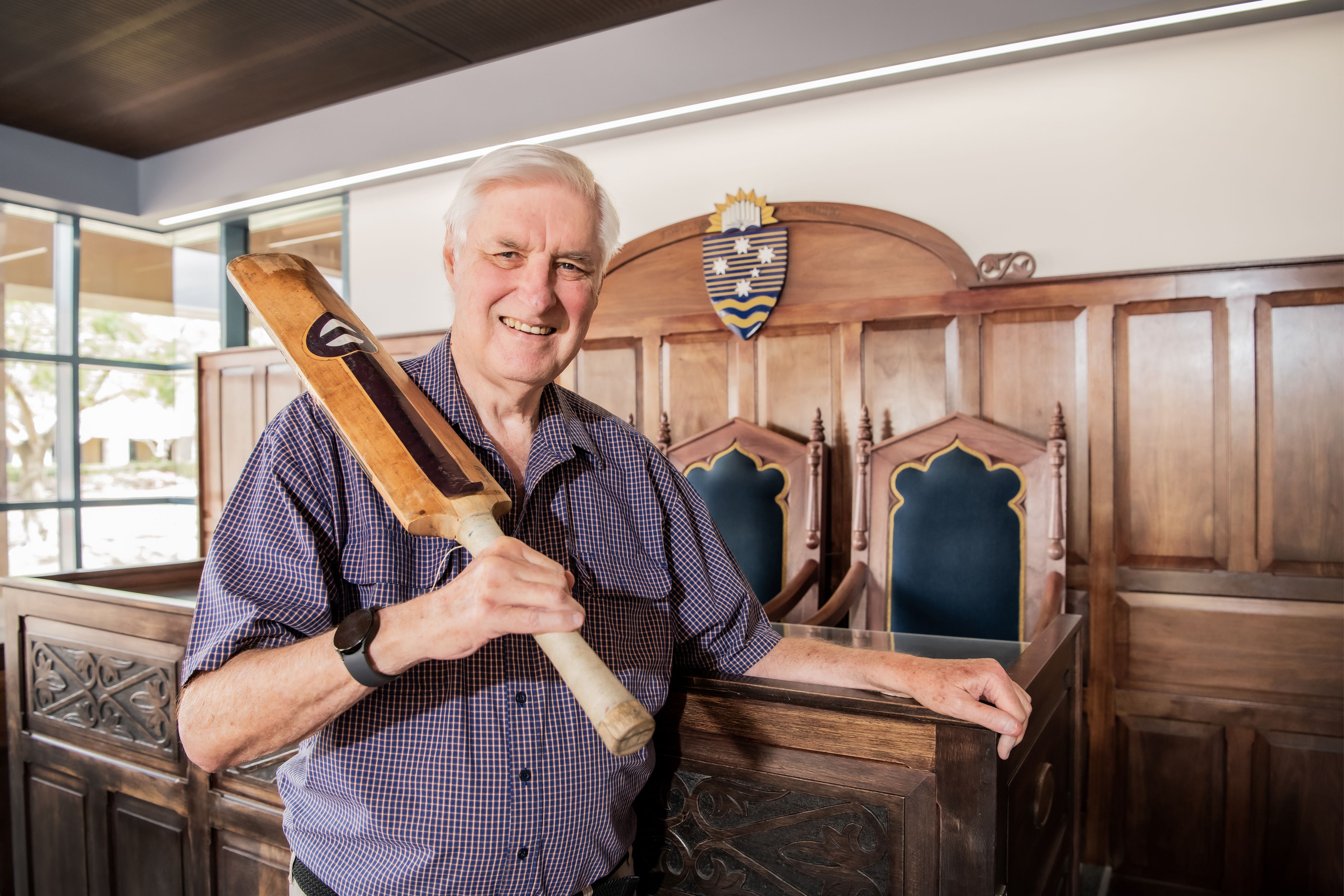
“I was an initial staff member as well as a foundation student,” Dr Sugden, pictured, says. “Those were the very early days. The first intake of undergraduates was in May ’89, and I’d already been here almost a year by then."
"It must have been just before summer when there was a notice down in the brasserie calling for anyone interested in forming a cricket club to come to a meeting. I was almost 40, so I thought I was too old, but I figured, why not? And I guess they must have been short of players because I got a game in the very first Bond team.”
The notice that spawned a cricket club. Source: Bond University Library archives.
The notice that spawned a cricket club. Source: Bond University Library archives.
The driving force behind the club’s creation was John Giles, a business development officer at the fledgling university.
“Our first Vice Chancellor Don Watts loved his cricket and he was supportive, so we got together and formed a club,” Giles recalls. “And because I had some contacts in the Gold Coast Cricket Association, I was made president. We really had to push some things through and needed them to bend a few rules for us because it was so close to the start of the season. About two-thirds of the team were students – they were about 19 – and it’s fair to say the rest of us staff members were probably double that.”
A 1990 article in the Gold Coast Bulletin.
A 1990 article in the Gold Coast Bulletin.
The first Bond side entered into third grade of the local competition in 1989–90, captained by business student Geoff Lucas. Dr Sugden started his career in a blaze of enthusiasm but admits his energy outstripped his technique.
“In the first game we played against Surfers Paradise, they put me in at number four or five, which was fairly optimistic for me,” he laughs. “We managed to put on 75 in a partnership with the skipper – I got 24 and Geoff got the rest. When I gave it away a couple of years later, that was still my top score for Bond. I think it was the last time I started so high up the order. I was a specialist No. 11 by the end.”
The club may have been young and under-resourced, but it shared the fledgling university’s ambition.
That first season ended with a presentation night featuring an esteemed guest speaker - Sam Loxton, a member of Sir Donald Bradman’s legendary 1948 “Invincibles”, who toured England without losing a match.
The following year brought a new intake of students, including fearsome fast bowler David Lucas, Geoff’s brother, and batsman Michael Pabst, who Dr Sugden believes may hold the distinction of being the first Bond player to score a century.
Keito University cricketers at Bond in 1996. Picture: Bond University Library archives.
Keito University cricketers at Bond in 1996. Picture: Bond University Library archives.
Before the club eventually faded away in the mid-nineties, Bond cricketers recorded memorable wins, including a victory over a Brisbane-based Indian All Stars team at The Canal in 1994 and a friendly against Japan’s only university cricket team, Keio University. Another highlight came when father and son, John Day – a former headmaster of The Southport School who had joined Bond in a recruitment role – and Matthew Day, a Bachelor of Commerce student, took the field together in Bond colours.
Dr Sugden, who was the University’s longest-serving staff member when he first retired in 2012, now lectures in mathematics in the Faculty of Law. He is delighted to see the Bond Cricket Club return to the field after all these years.
“I have very good memories from my time with the Bond cricket club,” he says. “They were great years – and it’s fantastic that they’ve re-formed the club.”
Cricket as connection
Like Dr Sugden, who still keeps in touch with his old teammates, Bond Cricket has become more than just a club for Aakula, Mahasivam and Worthley. It’s a symbol of connection – between disciplines, between generations, and between staff and students united by the same love of the game.
“Our motive is simple,” Aakula says. “Keep cricket happening, build the club, and have fun on the cricket ground.”
Published on Thursday, 16 October, 2025.
Original thinking direct to your inbox

Stories from Bond
